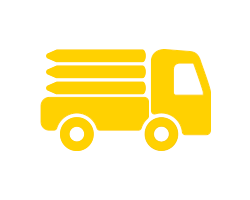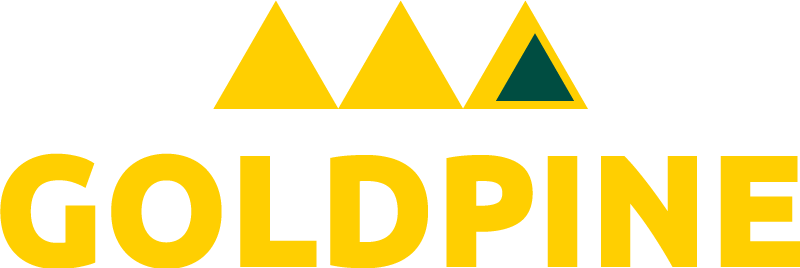Goldpine
Altrive Red Deer
On a 166-hectare slice of land near Riversdale, Southland, fourth-generation farmers Andrew and Samantha Elder are doing more than just raising red deer – they’re building genetics, looking after the land, and doing it all with an eye on the future. The farming couple whose careers involve conservation and veterinary science are building on a deer breeding programme that spans generations – focusing on quality genetics, careful herd management, and sustainability for the long haul.
We caught up with Samantha and Andrew, to learn about Altrive Red Deer farm, which, runs about 1,000 deer, with 310 hinds fawning each year. Andrew returned to the family farm 11 years ago, where his father, Geoff Elder, had long maintained a Romney stud, keeping detailed records of the operation. Starting with just 40 hinds in 1985, adding deer into the current record-keeping programme from day one was not too much of an ask, Andrew said. It’s a lineage-focused system that still underpins the stud today.
“A lot of our animals trace back 10 or 11 generations. That’s where everything goes back to, really. Everything’s recorded. That foundation really matters in a breeding programme.”

The Elders are meticulous, selecting only the best genetics regarding each individual deer’s velveting and farming capabilities.
Even with the dedicated time and effort put into selecting the deer, nature dictates some limits. “We can’t fawn the whole property due to flooding,” Andrew explained. “About 40–50% of the farm is prone to floods from the Mataura River. We’ve had three or four big floods in ten years. We just can’t risk fawning on the bottom paddocks - we literally can’t shift them in time if the river comes up.” That kind of risk means the Elders plan carefully. “The Environment Southland website’s pretty sharp,” Andrew told us. “If Fairlight Station upriver gets 100 millilitres, we start making a plan. Usually, we’ve got about 12 to 24 hours to get deer to higher ground.”
Ninety per cent of the fully deer-fenced farm is irrigated. They use hard-hose guns, which are an “asset”, Andrew said. “As a deer farm, we can’t just put them on a truck and find alternative grazing,” he explained. The ability to consistently grow feed directly impacts the farm’s productivity and the health of its deer herd. Altrive’s irrigation allows the Elders to grow quality feed throughout the summer, supporting the breeding programme and maintaining the farm’s genetic standards.

Velveting is one of the most critical periods on the farm. Andrew explained that once the deer drop buttons, which occurs between August and November, the deer’s nutrition is carefully monitored and supplemented in preparation for the velvet harvest. The time between button drop and velvet harvest is 52 days. “That’s all done in our deer shed - just Sam and I - and then we onsell to our velvet buyer.”
Altrive has two main sales each year, in January and August, with a focus on sire stags, yearling hinds, and velvet genetics. “We take through 65 to 75 of our top velveting two-year-olds every year, hoping they’ll make the sale as sire stags at three,” Andrew explained. “The bottom ones either get sold or go into our velvet herd.” They also sell mixed-age and in-fawn hinds in August, about 50 to 60 of them, all with top genetics, he said. With their deer bred specifically for velvet, not many deer are sold for meat.

Samantha’s role on the farm is hands-on and deeply involved, particularly when it comes to animal health and welfare. As a veterinarian, one of her priorities is raising animals that thrive beyond Altrive.
“We don’t use a lot of supplements because we want our deer to perform no matter where in New Zealand they end up. We’re disseminating genetics throughout the country, and we want these animals to be robust and well-tempered. We’re a stud; this is about breeding,” she said.

“So Vitamin G is what we focus on. It’s as simple as feeding animals well and managing them smartly.” That includes preventative care, she said. The farm undertakes Yersinia and leptospirosis vaccinations, as well as behavioural management. “Deer are different to sheep or cattle. You’ve got to manage their social hierarchies. We try to keep the animals in familiar groups. Deer are sensitive to changes and naturally wary- that’s where lead hinds come in.”
One lead hind in particular stands out. “She was born in 2003,” Samantha told us. “She’s 22 now, doesn’t fawn anymore, but she’s probably the most important animal on this farm. Her job is to lead deer into the shed and keep separated animals company. She’ll just wait in the pen with them, calm as anything, until we’re ready. Then she follows us out.”

Altrive’s breeding programme includes embryo transfer and some artificial insemination. “We choose our top 14 hinds,” Samantha explained. “They’ll produce around eight embryos each, which go into 90 recipient hinds. But all our recipients are recorded animals too - they’ve all got value in their own right.” Though they run a mostly closed herd, the Elders do bring in outside sires to stay competitive.
“We’re really striving toward the kind of three-year-old sire the industry wants - tidy velvet, round tops, good temperament,” Andrew said.
Their commitment to improvement doesn’t stop at genetics. Sustainability is a daily concern.” Andrew and I are focused on sustainability, and Andrew has a strong interest in conservation, being involved in the Fiordland Wapiti Foundation. We have predator trapping here, and we really enjoy that. It’s a great family activity, we all go out and check our traps,” with the couple’s two-year-old daughter Madelyn tagging along. “There are some areas on the farm that we call critical source areas. We’ve fenced those off, and they’re now stock-excluded, and we’re working on a plan in the next few years to get them planted out into native vegetation,” Samantha said.

The Elders are keenly aware that their land isn’t just theirs - it’s held in trust for the future.
“We’d like to see this farm go to the next generation,” Samantha said. “We’ve got a daughter now, and that makes it even more important. We want to leave this place better than we found it. We just want to do the best we possibly can, so that we can pass on this beautiful land that we’re so lucky to farm.”

That future-minded approach extends to their involvement in industry groups. Samantha is a veterinarian and serves on the Southland Deer Farmers Association and the NZ Veterinary Association Deer Branch. “Through those roles, I get to see what’s going on nationally,” she said. “And I just really enjoy learning more about deer.”
Despite the current market challenges, the Elders remain optimistic. “There’ve been a few dips and troughs in the industry, and we’re in a dip now,” Samantha said. “But we believe velvet’s a brilliant product. It supports immune health; it fights fatigue. More and more people are looking for that.”

While the markets may ebb and flow, life at Altrive keeps moving forward; buttons drop, velvet grows, hinds fawn, and the lead hind keeps doing her job. At the heart of it all is a family working hard, thinking long-term, and doing their best to raise strong deer and strong roots - both on the paddock and in the soil.

.jpg)
.jpg)

